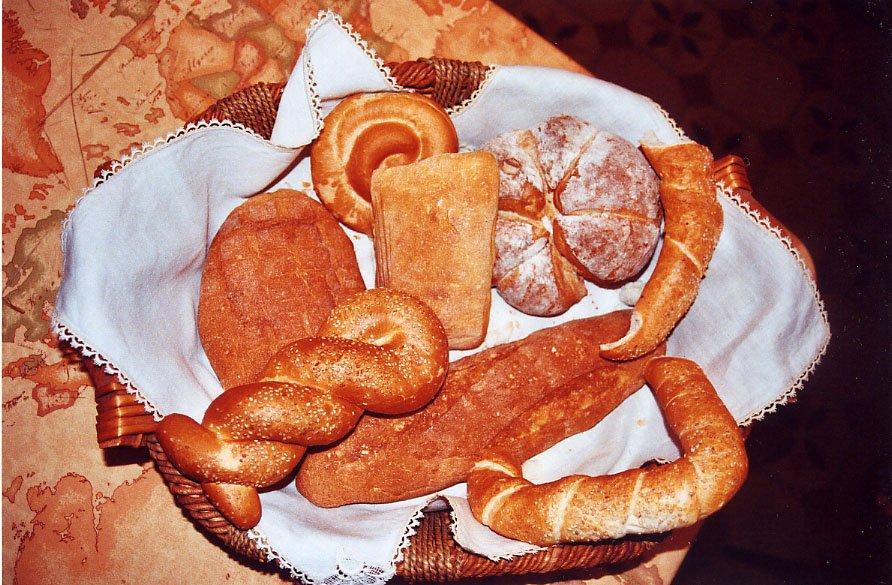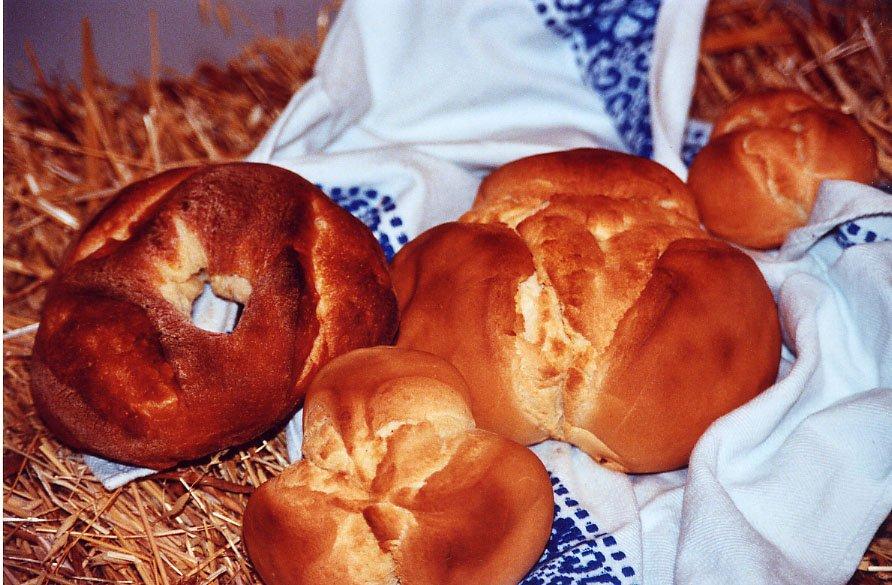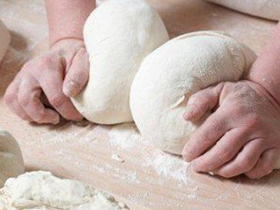
Bread Making
By Marzia Greco
Nowadays, the price of bread in Italy has increased astronomically. That’s why housewives—in small towns of Sicily, at least—have started to bake bread at home more frequently, resuming the recipes that were passed on from one generation to the other. Actually, the only way of learning to make pane di casa, a hard crust type of bread, was by watching and gaining experience in baking it because everything was mixed “by eye;” no one had a written or accurate recipe. No less, every family made a kind of bread that was unique, not mistakable with any others. A good bread baker made a good wife and was a staple to the home.
The typical frugal dinner on weekdays in the Sicily of the post-war years usually consisted of vegetables and olives grown in house gardens and eggs laid by the chickens that peasants had in their barnyards. This regime of austerity made bread very important to accompany meals to fill up the stomach—“pi ghinchiri a panza.”
The husband and male members of the family that worked on the crops usually stayed away from home for a week since the cultivated area was far from the town center. It was so far that it was only reachable by donkey or by many hours of walking. It was a woman’s duty to have ready-baked bread for their return home. If the men of the family came back unexpectedly, she would ask a neighbor to borrow a loaf of bread. But she knew that her family members would notice right away that the character and flavor of it would be different than her own. The bread was made using la farina di grano duro (hard-wheat flour), yeast and water. The dough was put on a flat piece of wood surmounted by a thick stick, called sbrivula.
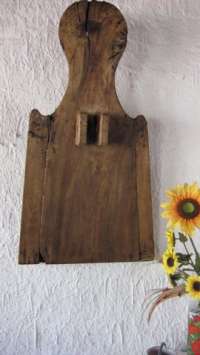
This contraption was called scaniaturi and it was a sort of bread machine, manually operated. Two women worked together; one of them, sitting down, turned the dough and the other, standing, made the stick go up and down, hitting the dough until it became smooth. This process was called scaniari e minari. As they proceeded in the preparation, the dough was marked with a cross and the following prayer was recited: ”L’angilu passa / a ‘razia ni lassa / criscilu Diu / criscilu Maria / a ‘razia ce’ / crisci u pastuni / Diu lu crisci / Diu nu runa” (The angel passes by / leaves us grace / God let it grow / Mary let it grow / we’ve got the grace / the dough rises / God makes it grow / God gives it to us.)
Then the dough was divided into portions and then into different shapes.
Two pieces of dough were separately worked with the two hands and then stuck together to make: iminni, breasts, a esse, the letter S with a dorsal cut, uiaddu, the rooster, resembling its crest and a rosa, the rose.
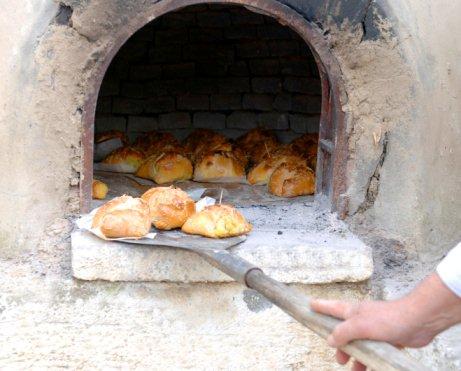
If little children were around, miliddi were also made; these were breadsticks so hard that they were given to toddlers that had no teeth and no danger of choking on them because they were unbreakable!

The waiting time for the yeast to rise was spent gossiping and hoping that the bread wouldn’t be mutu (mute), not well risen, but ariddu, sticky and beautiful in texture and flavor, and that the cut down the center of the loaf, made with a sharp knife, would ‘open.’
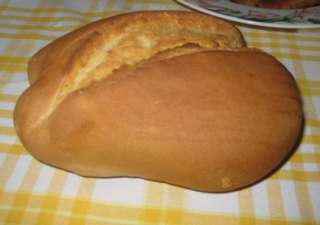
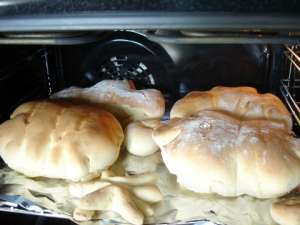
The bread was baked in a brick oven, alimented by the burning branches of vines, called magghiola. Reaching the right temperature in the oven required much experience. The sides of the oven had to become a particular shade of white before you could put the bread in, and if it was too hot, it was wet with a damp branch. Nowadays, whoever has a brick oven and is capable of using it still does, and the difference in baking is very evident; you can smell the bread in the air, you can see the beautiful brown loaves coming out of the oven, you can taste the smoked aroma. It is a treat for all of the senses that makes you travel back in time.
And then, let’s face it, who can resist a hot piece of bread coming out of the oven?
